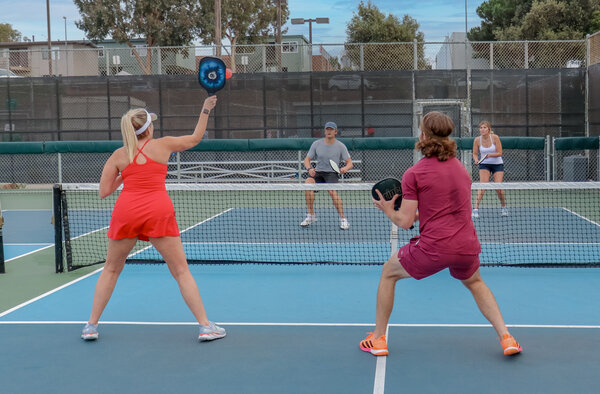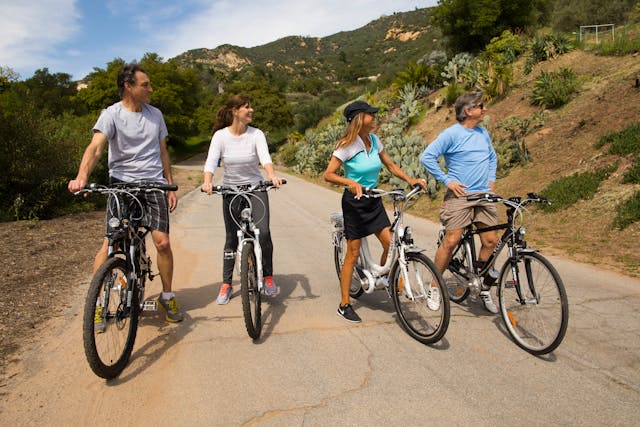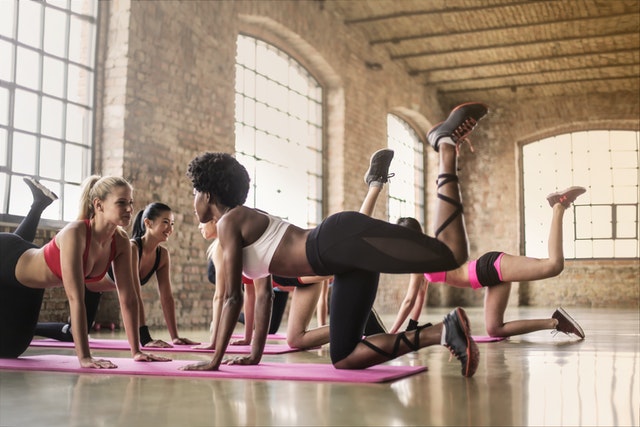Tens of millions of pickleball players in the United States are learning how to play and discovering the fantastic health benefits of pickleball, all while having a blast.
According to Pickleheads, there are over 10,000 courts across the United States, and a recent CNBC article claims that the number of Americans picking up a paddle has soared to an unbelievable 36.5 million.
The health benefits of pickleball range from boosting mental health and cardiovascular strength to burning calories and preventing osteoporosis, to name only a few.
The 5 Health Benefits Of Playing Pickleball
The health benefits of pickleball are numerous, but here are a few of the highlights.
1. Improves Mood And Mental Health
Time and time again, exercise has been shown to have a positive impact on mental health. Physical activity can help reduce stress and anxiety, as well as stave off depression.
Playing pickleball also releases endorphins, which are brain chemicals that elevate mood.
What’s more, pickleball is a social game, and it helps players form bonds and experience healthy social activity. This too helps relieve stress and elevate mood.
2. Better Cardiovascular Health
Pickleball is an aerobic sport. As a pickleball player moves around the court, their heart rate picks up. The heart is a muscle, and like any muscle, it gets stronger with use.
What’s more, pickleball involves intervals of intense movement, followed by short periods of rest. You may have heard this referred to as a HIIT workout, or “High Intensity Interval Training.” During interval training, the aerobic benefits of exercise are even greater.
3. Helps With Weight Management And Burns Calories
One of the most popular health benefits of pickleball is that it’s a great way to burn calories while having fun.
An hour of pickleball can burn as many as 500-900 calories per hour, depending on your weight, sex, and how intensely you play.
4. Improves Flexibility And Balance
Pickleball is a fast-paced sport that requires coordinated footwork and quickly changing direction.
Players have to engage their core to maintain balance, and they have to reach for shots, backpedal, and move laterally.
All of these movements flex and stretch different muscle groups, and in a typical pickleball game you’ll end up using your entire body.
5. Can Help Prevent Osteoporosis
Pickleball is extremely popular among players over the age 60, since it’s a great low-impact workout that’s appropriate for players of all ages and levels of athleticism.
One of the benefits of pickleball that older players may especially appreciate is that it helps with bone health! Pickleball helps players maintain bone density and prevent osteoporosis.
Alongside medication and other therapeutic treatments, pickleball can even serve as a part of a treatment plan for those already suffering from osteoporosis.

How Does Pickleball Work?
A pickleball court is the same size as a doubles badminton court: 44 feet long by 20 feet wide. A pickleball net’s height is 36 inches high at the sidelines and 34 inches high in the middle.
Similar to other paddle sports, pickleball begins with a serve. In pickleball, the ball must be served underhand. After the serve, players hit the ball and back and forth across the net, until one team fails to return the ball or receives a fault.
One of pickleball’s defining features is its Non-Volley Zone (or “The Kitchen”), an area extending 7 feet away from the net on both sides of the court. Within The Kitchen, players cannot volley (hit the ball before it bounces.)
In most cases, a game of pickleball is played to 11 points, and a player or team must win by two points.
Does Athleticism Matter In Pickleball?
Athleticism matters in pickleball, but not nearly as much as in other sports. Athleticism helps players move quickly, strike the ball powerfully, and maintain endurance, all of which are advantages.
However, pickleball is ultimately a game of finesse, technique, and strategy. Pickleball requires quick reflexes and solid hand-eye coordination.
Shot placement and accuracy are more important than the power of your shots. A pickleball player with a good shot technique and a strong grasp of the game’s strategy will outplay a more athletic player 9 times out of 10.
Tennis vs Pickleball Gameplay
Pickleball and tennis share many similarities, but there are some important differences between the two sports. Here are just a few of them:
Similarities Between Pickleball and Tennis:
- Both are played on a court divided by a net
- Both involve hitting a ball across the net with a paddle or racket
- In both games, teams or players take turns serving, then hit the ball back and forth until one team loses the rally
- Players must win by two points in both tennis and pickleball
Differences Between Pickleball and Tennis:
- A pickleball net is slightly lower than a tennis net
- The court is smaller for pickleball
- A pickleball is larger and softer than a tennis ball, and it’s made of perforated plastic
- Pickleball uses wooden or composite paddles as opposed to rackets
- Pickleball has a “Non-Volley Zone” near the net in which players cannot volley

The Bottom Line: Pickleball’s Health Benefits
The health benefits of pickleball are numerous, and they extend beyond simply burning calories—though pickleball is great for that, too!
A major part of the reason people see massive health benefits from pickleball is that it’s low-impact, fun, and social. Those traits make it a form of exercise that’s easy to stick with, and once you’re plugged into a community of pickleball players, you’ll find yourself hitting the court week after week.
So, how has pickleball impacted your health and overall well-being? Do you think of it as a workout, or just another way to have fun? How have you benefited from the sport? Let us know!
Author Bio
Brandon Mackie is the co-founder of Pickleheads, a platform that helps players find courts, organize sessions, and connect with local players. Once a competitive tennis player, Brandon can be found these days on pickleball courts near Phoenix, Arizona.



